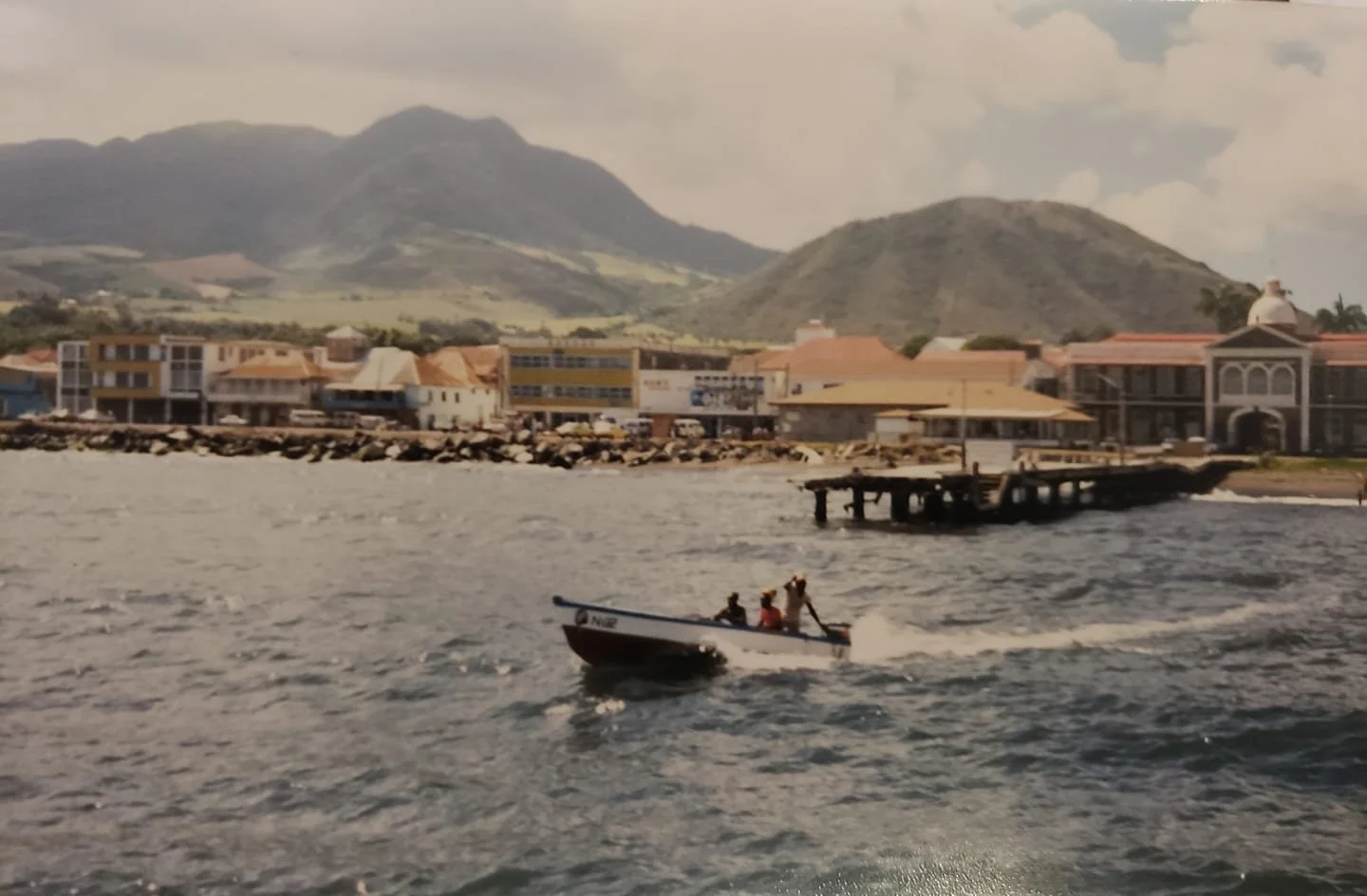The Story of the Sinking Christena
A brief history of the Christena tragedy of August 1, 1970.
Sidebar to “Conquering 50 Years of Fear”
The first day of August was normally the start of an entire month of celebration. The month signaled the height of summer mango season and the start of celebrations for various other holidays. Shops in Charlestown were bustling as Nevisians prepared for their family members on St. Kitts to visit for the festivities. But despite full social calendars, women still had to bring in income and goods for their families as in any other week. The women, known as hawkers or turn-hands, traveled by ferry to the main market in St. Kitts to sell produce. Wearing tea-length cotton dresses fitted with pouches to store coins, the women took over provisions in sacks and hand-woven baskets. Once they had sold enough of their own produce they turned their profits over for other bulk products like kerosene, flour, and cornmeal. With their provisions in tow the women walked back to Treasury Pier and boarded the Christena, the ferry that ran between the two islands, to travel back to Nevis in the late afternoon. The journey was so short that you could see both islands.
Crowds of ferry-goers wait on Treasury Pier in St. Kitts before boarding the Christena. | Photo Courtesy of Steve Manners
The view of St. Kitts that ferry passengers would see when leaving Treasury Pier by boat. | Photo Courtesy of Steve Manners
The boat was packed shoulder-to-shoulder with women, children, and men. At the time most women on the island did not know how to swim, as leisure time was never an option for busy mothers. Some men knew how, as many worked as fishermen to support their families. But the Christena was overcrowded, as it often was. The Captain, James Richard Ponteen, always tried to ensure that all the hawkers made it back on the last boat home, even if it meant squeezing in more passengers. Mothers needed to return home to their large families by sunset, as in 1970 most homes on Nevis lacked power. While many recall the captain being a kind man, thankful mothers often gave him extra fare or produce for helping them get home. Many people also knew that the captain skimmed fare money meant to be collected by the government. Fare cost 50 cents for the lower level and 1 Eastern Caribbean Dollar (XCD) for the upper level. Since the boat was almost always overcrowded, Captain Ponteen could pocket some of the money each day without being noticed – or at least confronted – by government officials in St. Kitts. The scheme was helped by the fact that he was appointed to the role of ferry captain by a family member who worked in the government. As a former cop, Ponteen had little to no experience as a captain.
The boat had already reached capacity that afternoon, but Captain Ponteen still turned back to St. Kitts three separate times to pick up more passengers. The Christena was designed to transport 150 people on the short ocean journey. But on that day, there were at least 321 people aboard, more than double the maximum capacity. There were also no life jackets on board, despite the fact that most passengers were unable to swim. The metal boat looked solid on the ocean water, as if nothing would ever defeat it.
But this typical daily journey for hundreds of people became the worst maritime disaster in the history of the English-speaking Caribbean. The boat went down at roughly 4:10 pm off the coast of Pinney’s Beach. The owner of Pinney’s Beach Hotel alerted the central government in St. Kitts, panicking when he could no longer see the Christena. People who were in town that day recall similar experiences, witnessing the boat approaching Nevis one minute and vanishing the next.
The Christena, adorned with the British flag among others. | Photo Courtesy of Steve Manners
The boat sank quickly. People struggled in the water, flailing their arms for help and grasping fruit crates or bags that might help them stay afloat. Women who didn’t know how to swim tried clinging to those who did. In the process many died by dragging others underneath the water in panic. Watching the tragedy unfold in front of their eyes, people on the shore rushed to help. Men who were strong swimmers raced into the water to rescue anyone they could. Those with small rowboats or dinghies piled in as many people as they could save. The true hero of the day was Captain Skeet, a fisherman at Cliffdwellers, a hotel on the other side of the island. The hotel’s boat was the most powerful boat on Nevis at the time, and Captain Skeet was just returning from a fishing trip when he caught sight of the Christena sinking. Throwing the boat into full throttle, he went over to Pinney’s and arrived to see hundreds of people in the water, some swimming and some who had already drowned. It is estimated that Captain Skeet saved 60 of the 91 survivors that day. However, there were many others who could not be saved. Ultimately 230 people died in the Christena tragedy.
The type of smaller fishing boats that were used to rescue passengers of the Christena. | Photo Courtesy of Steve Manners



